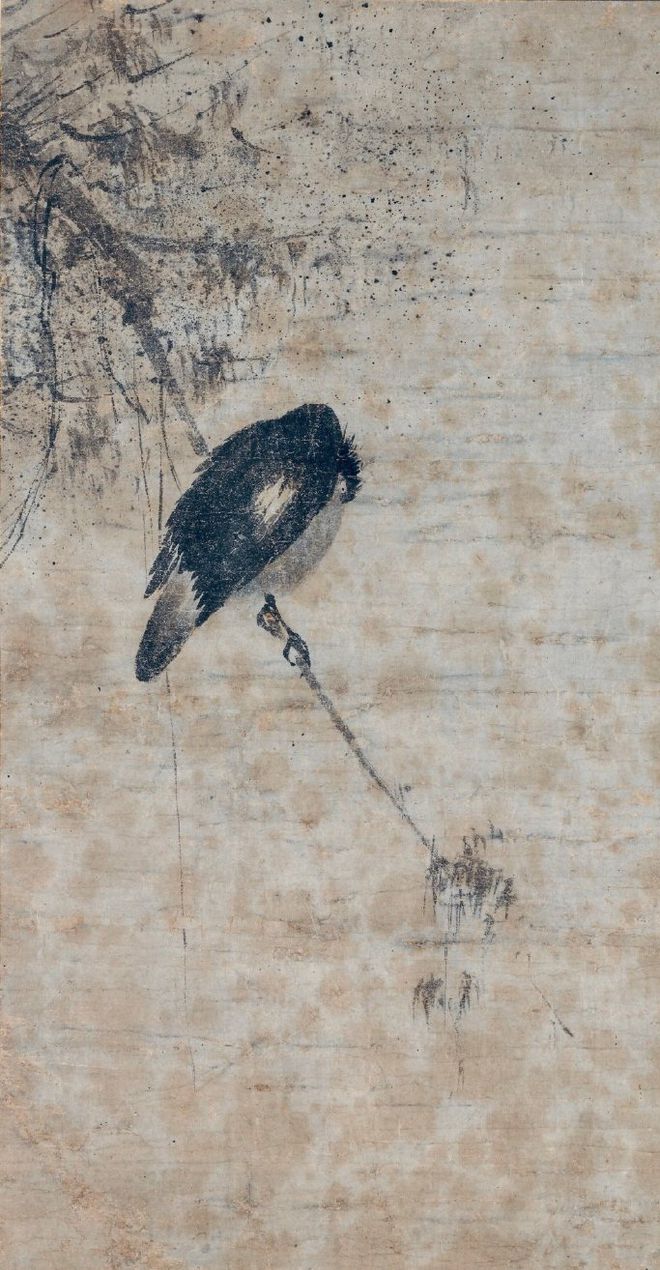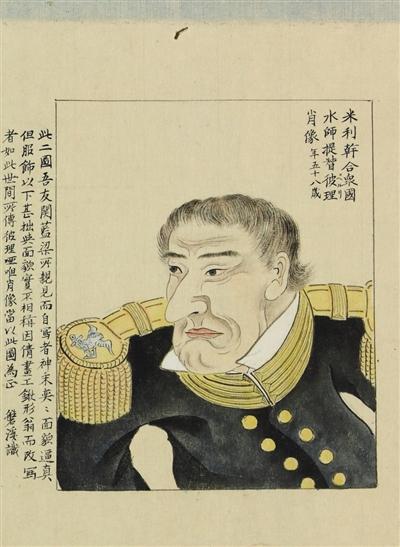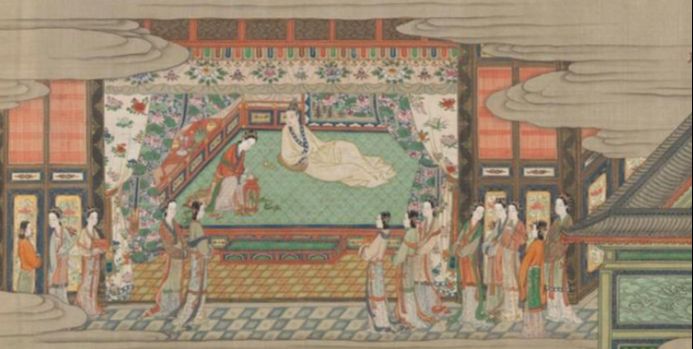
Ren Zhi: The transfer of a culture, the recipient also has its subjectivity and choice. Like the Muxi in the Song Dynasty, many monks did not evaluate him. But the Japanese art museum has the collection of Muxi as a national treasure. One named Zhu Shunshui, the survivor of the Ming Dynasty, became a thinker in Japan. Shen Nang Ping was a second- and third -rate painter in the supermodel, and ran to Japan to form the "South Ping School". You just said that Bai Ju is easy to be popular. We Chinese people like Li Bai Dufu, Li Bai's pride, and Du Fu's compassion. Bai Juyi cannot be compared. But in addition to Bai Juyi, the Japanese also like Hanshan.
Old Pan: Han Shan's evaluation on the mainland is not very high.

Ren Zhi: Yes, this intake is related to their way of thinking. China and Japan are neighboring countries, but the difference is very large. For example, the stories of Yang Guifei and Li Longji are very much liked by Japanese literature and art. According to "Song of Everlasting", the Japanese actually drew many types of stories. There are stories and scrolls, as well as Yang Guifei's temple. They understand that in Ma Yipo, such a beautiful beauty was killed, which was a tragedy. The images of Guan Yu and Liu Bei have appeared in animation, games, and film and television dramas. They also like "Water Margin". Japan's Ukiyo -eight will draw this 108th to the back. "Mengxi Bi Tan · Painting and Calligraphy" describes Xiaoxiang Eight Scenic Spots, and Japan also makes eight scenic spots. It uses this gameplay. According to the Ming and Qing Embroidered novels and the Chinese Spring Palace map, Japanese Ukiyo -e is also affected by this. There are also the influence of "Louge Map" and "Gusu's Burst Map" on the West. These prosperous market maps also appeared in Ukiyo -e paintings. The impact of traditional Chinese culture on Japan, until the Ming Dynasty, is still in an advantage. Wait until the Qing Dynasty, and the Song Dynasty also had a cliff.

Lao Pan: I think in the New Culture Movement, Japan has begun to affect China, and it has an advantage.
Ren Zhi: From the Meiji Restoration to 1895, when we were still holding the Four Books and Five Classics, we were open to Western studies and improved their rapid advantages.
Lao Pan: In the 1990s, I chased reading Lu Xun's book for a long time, and I also exposed to various interpretations of Lu Xun's books in a large area. Finally, I found out that all parts of the world, including the mainland, Hong Kong, Taiwan, and the two sides of the strait. Scholars study Lu Xun's work, and many Japanese scholars study Lu Xun's work. I feel that Japanese scholars have a considerable first -in -hand. In other words, many ideas and ideas were initially proposed by Japanese scholars. When Lu Xun had not yet become a classic writer, there were scholars in Japan paying close attention to Lu Xun. Takeuchi is good. As early as the 1940s, he wrote the height of "Lu Xun", and it was not until the 1980s that mainland scholars wrote that level.
Ren Zhi: Lu Xun is a big coffee in Chinese literature research. Dajiang Jian Saburo is a fan of Lu Xun. They studied Lu Xun in many aspects, and their ways were different.
Lao Pan: In the 1980s and 1990s, many of the breakthroughs in Lu Xun's research on the mainland were inspired by Japanese scholars. The Chinese history of Nisho Hunan, the "History of China" series published by Guangxi Normal University in recent years. Therefore, I think that various universities in Japan are in front of us in many aspects of Chinese history, Chinese writers, Chinese scholars, and Chinese classical literature.
Ren Zhi: In fact, from the 1980s to the present, a lot of Sinology town in Japan has gradually lost, and sinologists in universities have not loved to study China's fashion. Nowadays, no one in Japan studies Guo Jingming, and no one is studying the strange China. These messy people are too low to say that it is too low, and people do not need to study. In Japan for more than a hundred years, Japan is keen to study, a Lu Xun, and Mo Yan and Yan Lianke. In the study of scholars, it has a screening, as well as Yu Dafu. Those who have something to do with Japan, Yu Hua is also studied in Japan, and there are very few of other writers. Zhou Zuoren also has research, mainly he is the brother of Lu Xun.
Lao Pan: At the Chinese writer, Zhou Zuoren reads Japanese books. He really read the point where he is more familiar than the four books and five classics.
Ren Zhi: Zhou Zuoren's understanding and intervention in Japanese culture cannot be achieved by many Chinese writers. The writing of young people should also look at the works of the Republic of China, such as Lin Yutang and Liang Yuchun's works. During the Republic of China, this country was weakened, but there were elites who were in the officers. Not only did they work in universities, but Yan Yangchu's physical construction was valuable. But now elites, officers, and real intellectuals have been marginalized. A lot of things are substituted. I think there are factors in this regard.
Lao Pan: Therefore, the "heat of the Republic of China" appeared. In all fairness, the scope of academic research and literary creation during the Republic of China is limited to the scope of the entire world culture. How can there be so many "masters"! Even if Hu Shi is not a master, the thesis creation is created. Essence Hu Shi's main contribution is in terms of work, the first of the atmosphere, inspiring youth, and carrying back. However, compared to today's situation, the talents from the Republic of China are more indisputable. It should be explained that today we are talking about Chinese culture Japanese culture and Chinese literature Japanese literature -these concepts are not dead and unchanged. We only have to use them just to facilitate discussions. Big words cannot be kept vigilant at all times, just like there are no pure Chinese and Japanese in the world. We can only start from the specific historical context, to see and grasp them with a long period of time and development.

Ren Zhi: Lao Pan is right, there is no pure Chinese culture Japanese culture. After turning over Chinese history, how can the Han and Tang dynasties flourish? That is, they all have the minds of high houses, Hai Naichuan, and openness to the outside world. The Han Dynasty Zhang Jian and Banchang Chao two western regions. Tangdu Changan Hu Renmo shoulder -shoulder is a genuine international metropolis. The two generations of the Ming and Qing dynasties became old ladies wrapped in their feet. They were not wrapped in, and "not allowed to go to the sea" -Di modern Japan was originally like Manchu closed the country. June 3rd) U.S. Navy's prospective general Perry led the fleet to forcibly enter the Poya and Kanagawa (now Yokohama) of Edo Bay (now Yokohama). Jiayong, March 3, Seven), signed the "Japan -US Career Career Treaty" (Japan -US Kanagawa Treaty) in Kanagawa. Japan was forced to agree to open up the two ports of Shimota and Box Museum (now Hakodate). Portal coal is added to the water, and the supply of food and other items is also allowed to allow the United States to place consuls in the above two ports and enjoy the most benefited nations. Treaty. However, the Japanese took this as an opportunity to start the Meiji and Vitamin, the rich and strong soldiers, and walked out of the Middle Ages. How did the Japanese treat the invaders Perry? Unlike the Chinese people gritting their teeth and indignation of the British Governor of Commerce in China, the Japanese even set up monuments for the invaders, worshiping him as a hero, and thanking him to wake up his dream of thousands of years!

"Black Ship Come to"
